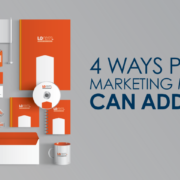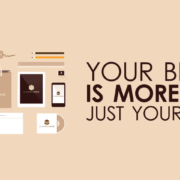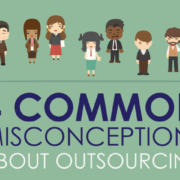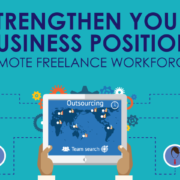4 Ways Printed Marketing Materials Can Add Value
Over the last decade, quite a bit has changed in media, marketing, and advertising. However the more that things change, the more things stay the same. Print advertising remains a stalwart for businesses of all sizes to connect with the people who are key to their business success. This makes printed marketing material still very relevant.
Here are some of the ways that printed marketing material offers business people value when they’re evaluating how to allocate their marketing budget:
Multiple Distribution Methods Available – One of the biggest advantages of using Print as a component in your overall marketing strategy is that Printed materials, in their many forms, are something that clients or potential new customers can hang onto until the time they’re ready to buy or start a discussion with you. In today’s digital age, many traditional Print Media Outlets such as Newspapers and Magazines have adapted to the changing advertising environment and offer their print advertisers a corresponding online ad as part of their ad spend.
Even though newspapers and periodicals have witnessed a decline in subscribers and readers, the people who still rely on these mediums for local, regional, and national news are more engaged with the material presented in them.
Direct Mail is also a straightforward and tested way to get into the consciousness of the client, especially if the material that you are sending to the consumer offers a compelling offer or promotion to give them an incentive to buy from you. All you need to do is think of how many times you’ve clipped a coupon from one of your local mailers to see how powerful this type of print ad can be for your company.
Personal and Professional Networking – If you’ve spent any time doing personal or professional networking, the chances are good that you already understand just how important it is to have an attractive and professional business card to hand out to everyone you meet.
While the digital world travels at the speed of light, a traditional business card stays rooted as a standard in the business community and provides essential contact information to the people who you meet in personal or professional settings. Your business card can be as unique as you are and provide everything from your address to a QR code – as well as where people can find you online, such as your website address and your social media profiles. By offering as much information as possible anyone who has it can connect with you on the platform they are most comfortable.
Sponsorships – As part of a Sponsorship Agreement, many local Organizations offer their sponsors’ recognition by way of print advertising. These print ads could include putting their logo on the player’s uniforms, publishing an ad in the Yearbook, or mentioning the business names sponsors on the brochure or leaflet. Not only does print advertising by way of Sponsorship help build brand awareness, but it also associates your name with an activity or causes the entire community embraces, which is always mutually beneficial for all parties involved!
Sponsorships worth considering include Non-Profit sponsorships, Corporate Sponsorships, and Special Event Sponsorships that help you connect with people who could benefit from your product or service offerings. By supporting community members, you are not only helping people in your community to do what they love, but you are extending your brand to everyone who is involved in the Organizations, whether it’s the local little league baseball team or a charity event which is excellent for your business reputation.
Industry Events and Conventions – Industry events and conventions are a great venue to connect with potential new clients, business partners, and vendors and printed marketing material assure that anyone who stopped and took the time to talk to you has something they can reference back to once they’ve left the venue. Depending on your marketing budget and the niche your business serves, it is always a smart idea to have printed material for people as they walk past or stop to talk. Ideas for products that you can give away include printed flyers, product brochures, magnets, Bluetooth devices, printed tote bags, water bottles imprinted with your business logo, Branded USB sticks, pens, or stylus’ or even T-Shirts that proudly tout your business branding on them.
Everyone loves a giveaway, so there is almost no way that you can go wrong with a product giveaway at these types of gatherings. Since the chances are good that consumers will meet and talk with numerous suppliers and vendors throughout the course of the day, your investment in these promotional materials gives them a way to remember your brand later. While there are upfront costs associated with buying customized promotional products, these costs can be offset quickly by the sales and return on investment when someone buys from you immediately or at a later time. For best results, select promotional items that are more likely to resonate with your target audience.
For example, if you are exhibiting at a health and wellness event, giving away items such as Antibacterial Gel Packets, Lip Balms with Sunscreen, Hand Sanitizers, Sleep Masks, or other related products make perfect sense. Business owners who exhibit at home and garden shows might be better served to offer items such as branded tape measures, paint stirrers, yard sticks, or levels to appeal to their target audience of customers who are in the market for home improvements or renovations at some time in the future. When these clients hang on to these useful items, it reminds the potential customer about your business and increases the chances that they’ll call you when the time comes to start the project. By selecting the most related promotional items for your event, you can be sure that the items you give away work as cost-effective marketing material when they call you to do their next job!
These are just a handful of ways that printed marketing materials can help your business brand and reach new audiences!

I’m a Digital Marketer & Freelance Writer with a penchant for all things forward-thinking and positive. I’m a fan of abundance and progress.






